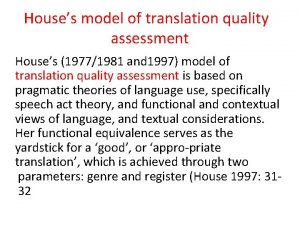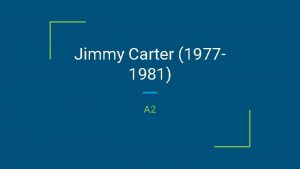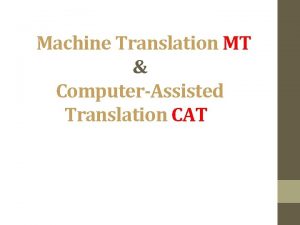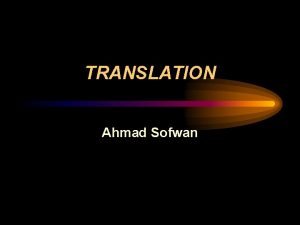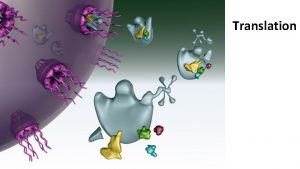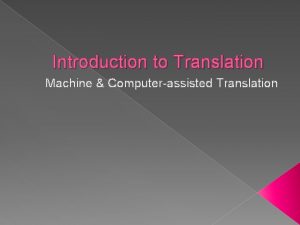Houses model of translation quality assessment Houses 19771981








- Slides: 8

House’s model of translation quality assessment House’s (1977/1981 and 1997) model of translation quality assessment is based on pragmatic theories of language use, specifically speech act theory, and functional and contextual views of language, and textual considerations. Her functional equivalence serves as the yardstick for a ‘good’, or ‘appro priate translation’, which is achieved through two parameters: genre and register (House 1997: 31 32

Following Halliday, House subdivides register into field, tenor and mode and correlates it with lexical, syntactic and textual elements (ibid 42). Her evaluation procedure consists of: (1) establishing a source text profile along the operational enabling parameters against which the target text is measured; (2) establishing the function of the source text; (3) comparing source text profile with target text;

and (4) providing a statement of quality that lists, in addition to errors, the matches and mismatches along the param eters of genre and register, and comments on the translation strategy (ibid: 42).

In evaluating the relative match between ST and TT, House makes a distinction between dimensional mismatches or covertly erroneous errors, and non dimensional mismatches or overtly erroneous errors, the latter type of errors comprising both mismatches of the denotative meanings of ST and TT elements and breaches of the target language system.

On the basis of the results of her study, House distinguishes between overt translation and covert translation. An overt translation is called for whenever an ST is source culture linked and has independent status in the source language community

A covert translation on the other hand is called for whenever an ST is not source culture linked, and does not have independent status in the source language community; a covert translation is not marked pragmatically as a TT of an ST, but might equally well have been created in its own right (House 1981, 189 194).

In cases where functional equivalence cannot be achieved, House suggests a second level function to be posited as a criterion for adequate translation.

However, Lauscher, (2000), quoting van Dijik and Kintsch, states that House’s functional equivalence seems problematic because interpretation of texts is not only linguistic but is also subject to influences which are cultural, social and individual, and lie outside the text (ibid: 154).
 House model of translation quality assessment
House model of translation quality assessment Acceptance house in money market
Acceptance house in money market Communicative translation
Communicative translation Voice translation profile
Voice translation profile Square root function transformations
Square root function transformations Semantic translation và communicative translation
Semantic translation và communicative translation Perform quality assurance
Perform quality assurance Pmp quality vs grade
Pmp quality vs grade What are quality standards in project management
What are quality standards in project management
